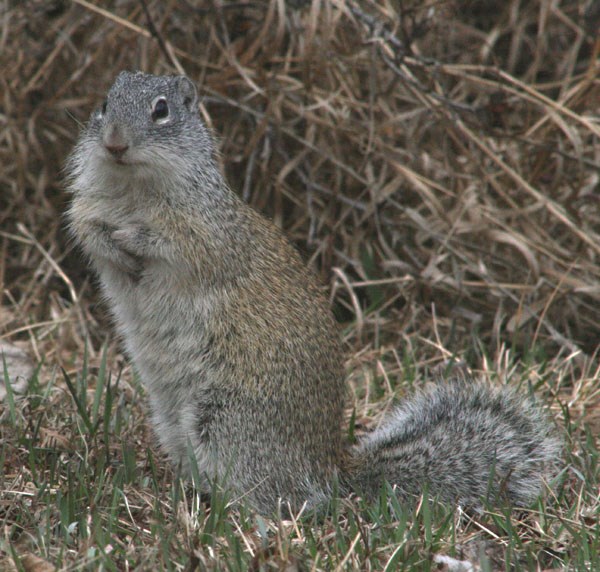The County of St. Paul has two per cent strychnine available again this year to try to control the Richardson ground squirrel.
The best time to control the pest is in spring because there is nothing else for them to eat, said assistant fieldman Jeremy Robinson.
As the grass comes up, the use of the grain goes down and the kill will be less effective, he said.
The program ends June 17, shorter than last year's deadline at the end of July.
When purchasing strychnine, purchasers need to provide land locations where the product will be used. The infestation must meet a certain criteria to qualify for the program, he said, which is one hole per two metres for a hundred metres, or 30 per cent crop loss in a hundred metre strip. The government conducts random inspections to verify, he said.
Around 60 people in a year use the program, Robinson said.
The product sells for $7 for a 250 ml bottle, which is enough to poison one kg of seed. Users can take two cases at a time, with 24 bottles per case.
“Some areas are worse for infestations than others so some people will use quite a bit and some will use just one or two bottles. It totally depends of the infestation. Some guys just have a couple gophers around the yard that they're trying to clean up and the others have acres and acres of it."
Strychnine users should put the treated grain down the hole and cover the hole to help prevent secondary poisoning, said Vaughn Christensen, manager with regulatory services division of Alberta Agriculture.
“There's a whole risk mitigation process involved in the use of the toxicant," he said. Alberta Agriculture encourages users to pick up any dead ground squirrels and properly dispose of by burying.
While strychnine was available previously, Health Canada banned the use of it except under emergency registration. This year is the fourth year of emergency registration.
A number of factors control the populations of ground squirrels, Christensen said. In a cold wet spring they will die naturally more frequently, but if it's dry and hot it can affect infestations.
In areas where strychnine has been used for a few years, there is less of a concern than area where it hasn't been used, he said.
Strychnine causes uncontrolled muscle convulsions and breaks the synapse between the nerve endings and the brain, said Phil Merrill, inspector with regulatory services division with Alberta Agriculture. The gopher basically dies of cardiac arrest, he said.
“What kills them outright is the fact that their heart … doesn't pump properly." The strychnine kills it in about three minutes because the blood stops circulating.
Strychine is probably the second worst toxin for secondary poisoning, he said. A poisoned gopher could kill another animal of the same weight if ingested, he said. Fortunately, most gophers tend to die down the hole and most raptors eat live prey, decreasing the possibility of secondary poisoning, although scavenging raptors can be affected.
The most common non-targeted poisoning is magpies, he said, adding that he suspects it could affect foxes. If a gopher eats more than needed to cause death, the potency of the agent in the carcass increases, increasing the possibility of secondary poisoning in a larger animal like a coyote.
“If a gopher just nibbles at it and kills itself, then he's not near as toxic as one that gorges himself," Merrill explained. “That depends a lot on how hungry the gopher is and how much green grass there is around there is."
Gophers tend to eat more if poisoned early as there is less green grass to eat, he said.
Infestation problems vary in the province. Problems in the south were less sever than the north-central area last year. The infestation problem is due in part to drought, he said. A bad infestation was caused in 2007 by a dry year a few years prior and no means of control. In 2008, emergency registration authorized use of strychnine.
It's taken a few years to get a handle on them, Merrill said.
Strychnine is the best available solution, he said, but it comes with the unintended effect of secondary poisoning. Shooting gophers could potentially be effective for a small area, he said, although the cost of shooting would be similar to poisoning. Shooting is hard to do on a large scale, he said.
Infestation causes loss of forage and production. In a dry year, gophers can devastate a lot of acres, he said.
While gopher holes do not cause problems for cattle, badgers can move in and create a problem for cattle. Livestock can break legs and machinery can break in badger holes, he said. Gophers tend to settle in pastures, which can pose problems for farmers.
Another possible toxicant has been tested, which is considered more environmentally friendly but potentially more deadly for raptors because it takes four to six days to kill. Live poisoned prey could be consumed and cause secondary poisoning.



